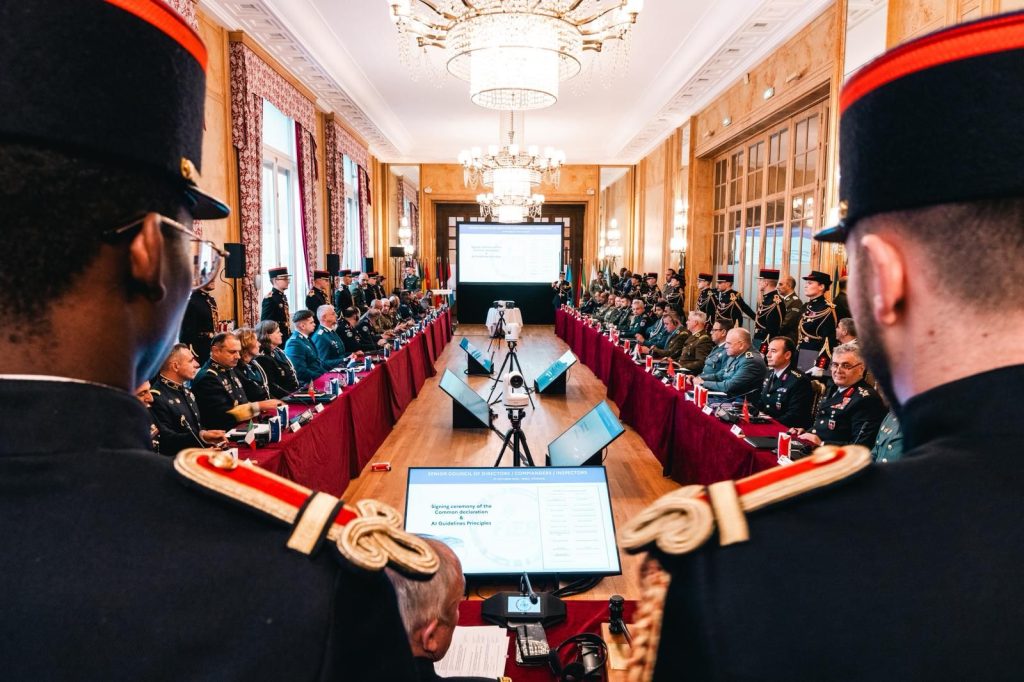Artificial Intelligence in the Hands of Gendarmerie Forces: Inside the New Guideline Principles Shaping International Security
As artificial intelligence (AI) permeates every corner of public action, gendarmerie-type forces—those policing institutions with military status—find themselves navigating a delicate balance between technological modernisation and the protection of civil liberties. To accompany this transition, the FIEP, the international association bringing together twenty-three gendarmeries and similar forces, has unveiled a set of “AI Guideline Principles”. Far from being a simple technical document, this framework seeks to define what responsible and legitimate use of AI should look like in the sensitive field of homeland security.
At the heart of these principles lies a conviction that echoes throughout the document: AI may offer unprecedented opportunities for anticipating threats, analysing vast quantities of data, or accelerating investigations, but it cannot be deployed without a rigorous ethical structure. The text stresses that gendarmerie-type forces, by virtue of their proximity to citizens and their involvement in daily security, must “set an example” in the way they adopt disruptive technologies. Their legitimacy depends on it.
The guidelines rest on four familiar ethical pillars—Non-Maleficence, Justice, Beneficence and Autonomy—each reinterpreted through the prism of law enforcement. The first insists on the imperative of preventing harm: AI systems must not expose individuals to unjustified risks, whether physical, psychological, legal, or reputational. A misidentification, a biased facial-recognition model, or a flawed risk assessment tool could have severe consequences. For this reason, the guidelines demand strict oversight, transparent procedures and mechanisms capable of detecting bias before systems are deployed.
The second principle, Justice, addresses a risk that has become emblematic in debates on AI: discrimination. Algorithms trained on imperfect or unrepresentative data are liable to reproduce inequalities, particularly when used in policing. The guidelines therefore call for closer scrutiny of datasets, greater transparency in how models operate and, crucially, independent audits capable of revealing potential disparities. Ensuring fairness, the text argues, is not simply a technical challenge but a condition for maintaining the social cohesion and institutional trust on which gendarmerie forces rely.
Beneficence, the third pillar, invites institutions to ask a deceptively simple question: whom does AI serve? In the context of homeland security, the answer must be unequivocal. AI should contribute to the public good, helping to protect citizens and improve the efficiency of operations without drifting into mass surveillance or excessive intrusion. Predictive tools may assist investigations or resource allocation, but their use must remain proportionate, transparent and subject to regular re-evaluation. The guidelines emphasise that technological progress must never come at the expense of fundamental freedoms.
The final principle, Autonomy, speaks to a concern raised by many operators on the ground: the growing risk of over-reliance on automated systems. The document insists that human judgment must remain central. AI may suggest, calculate or anticipate, but it must not decide. For citizens, autonomy translates into a clearer understanding of when and how AI is used in security operations, reinforcing the obligation of transparency and accountability placed upon institutions.
Beyond these four ethical axes, the guidelines outline a philosophy of governance. Impact assessments must precede deployment. Human oversight must be ensured at every critical stage. Systems must be traceable and explainable, so that decisions can be reconstructed and challenged when necessary. Lastly, personnel must be trained not only to use AI tools, but to question them, to resist automation bias and to remain aware of their limits.
In bringing together these principles, the FIEP seeks to establish a common standard for countries whose histories, administrative cultures and technological capacities vary widely. The objective is ambitious: to ensure that the integration of AI strengthens operational efficiency without compromising the democratic values that underpin the work of gendarmerie-type forces. In a context where security threats grow more complex and where public expectations of transparency are higher than ever, the establishment of such guidelines reflects a broader international movement. It is an attempt to chart a path where innovation and ethics advance hand in hand—a path on which security institutions can step with both confidence and vigilance.


